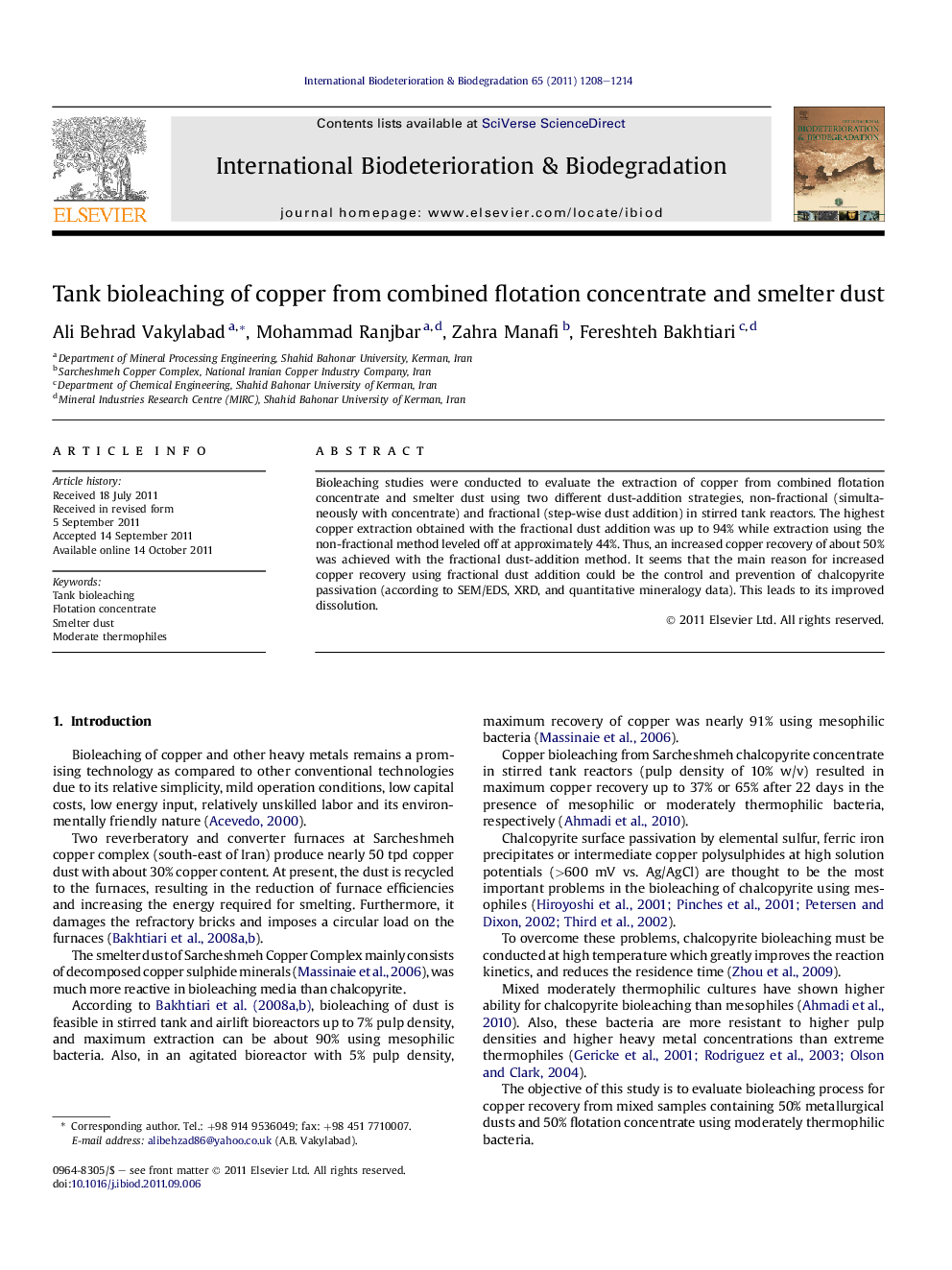| Article ID | Journal | Published Year | Pages | File Type |
|---|---|---|---|---|
| 4365289 | International Biodeterioration & Biodegradation | 2011 | 7 Pages |
Bioleaching studies were conducted to evaluate the extraction of copper from combined flotation concentrate and smelter dust using two different dust-addition strategies, non-fractional (simultaneously with concentrate) and fractional (step-wise dust addition) in stirred tank reactors. The highest copper extraction obtained with the fractional dust addition was up to 94% while extraction using the non-fractional method leveled off at approximately 44%. Thus, an increased copper recovery of about 50% was achieved with the fractional dust-addition method. It seems that the main reason for increased copper recovery using fractional dust addition could be the control and prevention of chalcopyrite passivation (according to SEM/EDS, XRD, and quantitative mineralogy data). This leads to its improved dissolution.
► In this research, copper bioleaching from combined flotation concentrate and smelter dust was investigated. ► A couple of bioleaching methods were investigated in this work: fractional and non-fractional dust-addition strategies. ► The highest copper extraction obtained with the fractional dust-addition was up to 94%. ► The extraction using the non-fractional method leveled off at approximately 44%.
